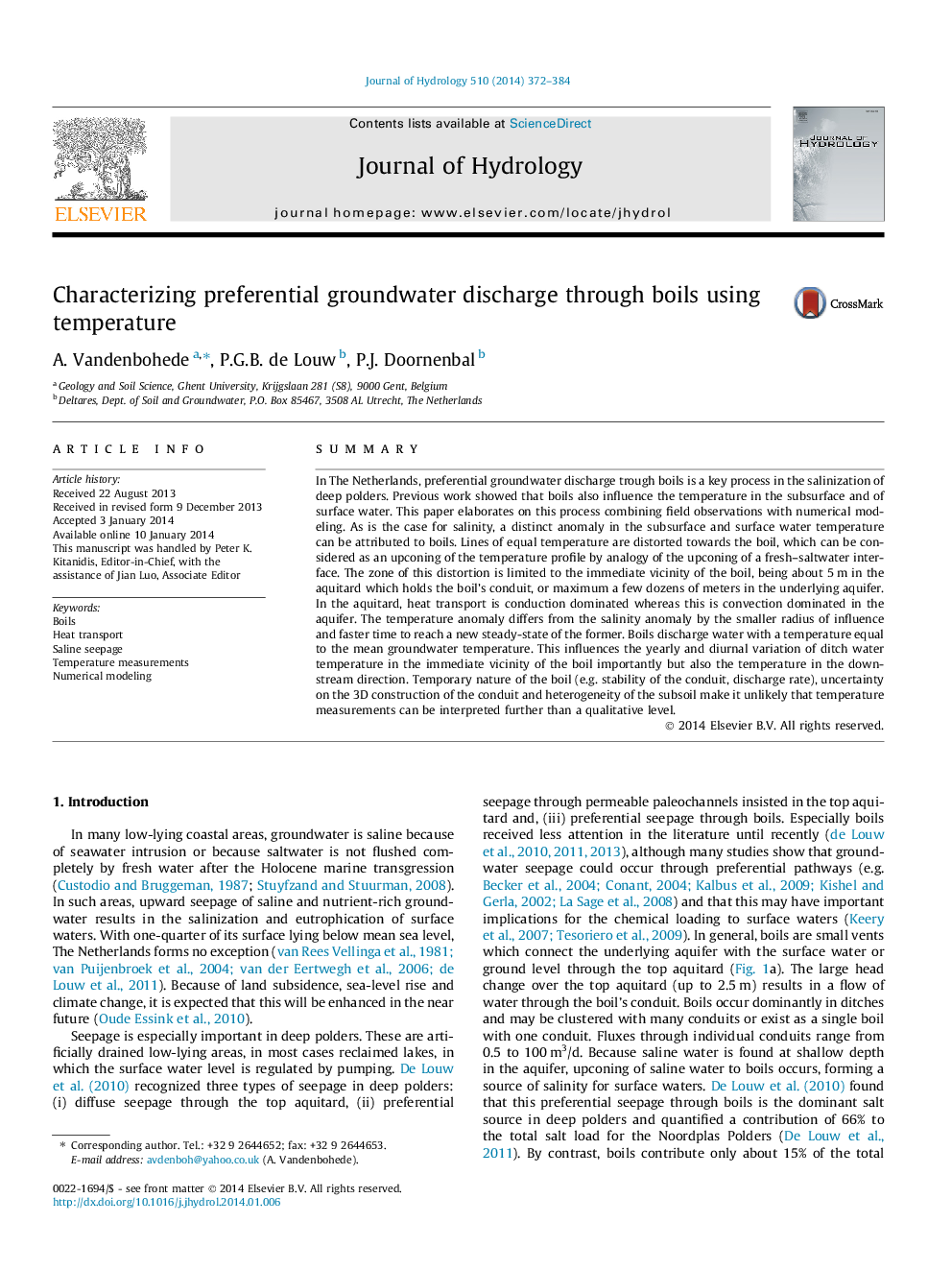| کد مقاله | کد نشریه | سال انتشار | مقاله انگلیسی | نسخه تمام متن |
|---|---|---|---|---|
| 6413221 | 1629938 | 2014 | 13 صفحه PDF | دانلود رایگان |
- Preferential seepage results in a surface water and groundwater temperature anomaly.
- Water with mean groundwater temperature is discharged to the surface water.
- Lines of equal groundwater temperature are distorted towards the boil.
- There are distinct differences between solute and heat transport.
SummaryIn The Netherlands, preferential groundwater discharge trough boils is a key process in the salinization of deep polders. Previous work showed that boils also influence the temperature in the subsurface and of surface water. This paper elaborates on this process combining field observations with numerical modeling. As is the case for salinity, a distinct anomaly in the subsurface and surface water temperature can be attributed to boils. Lines of equal temperature are distorted towards the boil, which can be considered as an upconing of the temperature profile by analogy of the upconing of a fresh-saltwater interface. The zone of this distortion is limited to the immediate vicinity of the boil, being about 5Â m in the aquitard which holds the boil's conduit, or maximum a few dozens of meters in the underlying aquifer. In the aquitard, heat transport is conduction dominated whereas this is convection dominated in the aquifer. The temperature anomaly differs from the salinity anomaly by the smaller radius of influence and faster time to reach a new steady-state of the former. Boils discharge water with a temperature equal to the mean groundwater temperature. This influences the yearly and diurnal variation of ditch water temperature in the immediate vicinity of the boil importantly but also the temperature in the downstream direction. Temporary nature of the boil (e.g. stability of the conduit, discharge rate), uncertainty on the 3D construction of the conduit and heterogeneity of the subsoil make it unlikely that temperature measurements can be interpreted further than a qualitative level.
Journal: Journal of Hydrology - Volume 510, 14 March 2014, Pages 372-384
